Present study-Innovation for thermal energy conversion
Research of Division of Innovation for thermal energy conversion
Study of Plate Heat Exchanger
1. Basic Experimental Apparatus for Plate Heat Exchanger
2. Measurement of Boiling Heat Transfer of Ammonia and Ammonia/Water Binary Mixture
3. Visualization of Boiling Flow Regime of Ammonia and Ammonia/Water Binary Mixture
4. Heat Transfer Enhancement of Ammonia and Ammonia/ Water Mixture Using Micro Grooves Surface
5. Study of Availability of Aluminum Alloys as a Material for Plate Heat Exchanger
6. Development of the Numerical Simulation Code for Designing of Plate Heat Exchanger
7. Visualization of FC-72 Boiling Flow Regime inside Plate Heat Exchanger
8. Development of the 3D Numerical Simulation Code for Plate Heat Exchanger
Basic Experimental Apparatus for Plate Heat Exchanger
In March, 2004, IOES installed basic experimental apparatus for plate heat exchanger for the fundamental researches of evaporator and condenser which were plate heat exchanger used in OTEC.
This apparatus consists of a plate evaporator, plate condenser, working fluid pump, a warm water heat source, cold water source, and other supplementary devices.
This apparatus is constitution similar to OTEC, but the turbine is not incorporated.
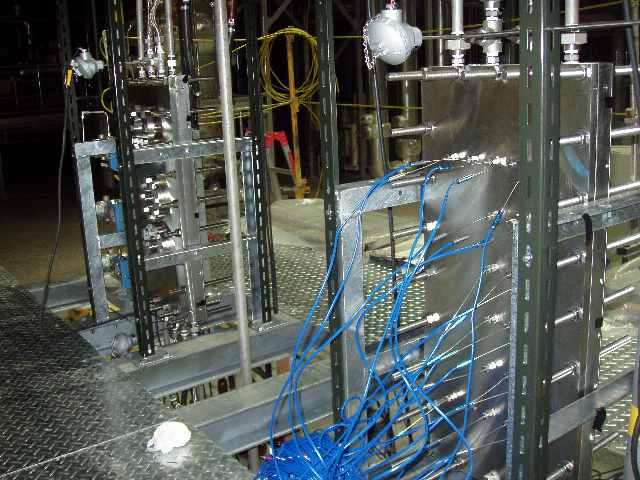 |
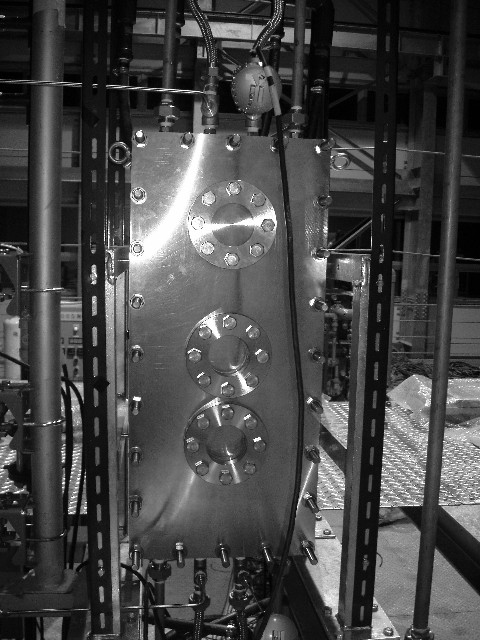 |
| Basic experimental apparatus for plate heat exchanger | Evaporator (with sight glasses) |
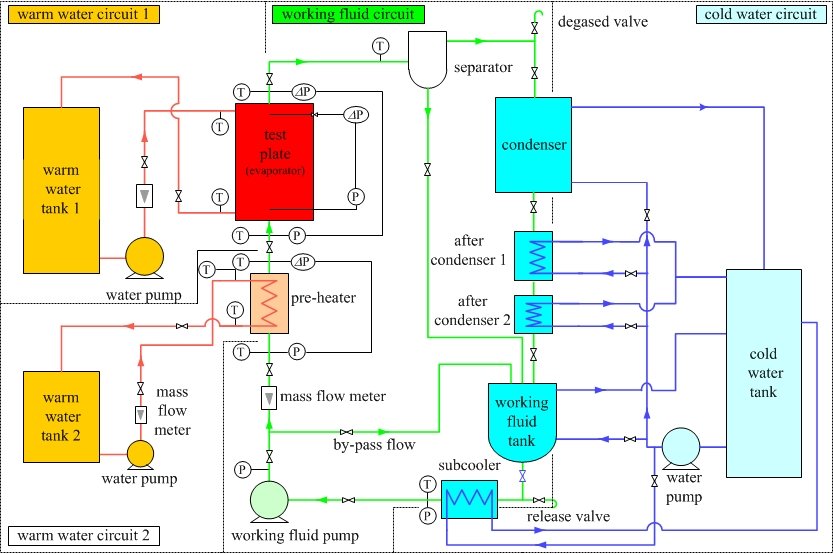 |
| Schematic diagram of the experimental apparatus |
Measurement of Boiling Heat Transfer of Ammonia and Ammonia/Water Binary Mixture
Measurement of the boiling heat transfer coefficient of ammonia and ammonia/water binary mixture as a working fluid inside plate evaporator using basic experimental apparatus for plate evaporator.
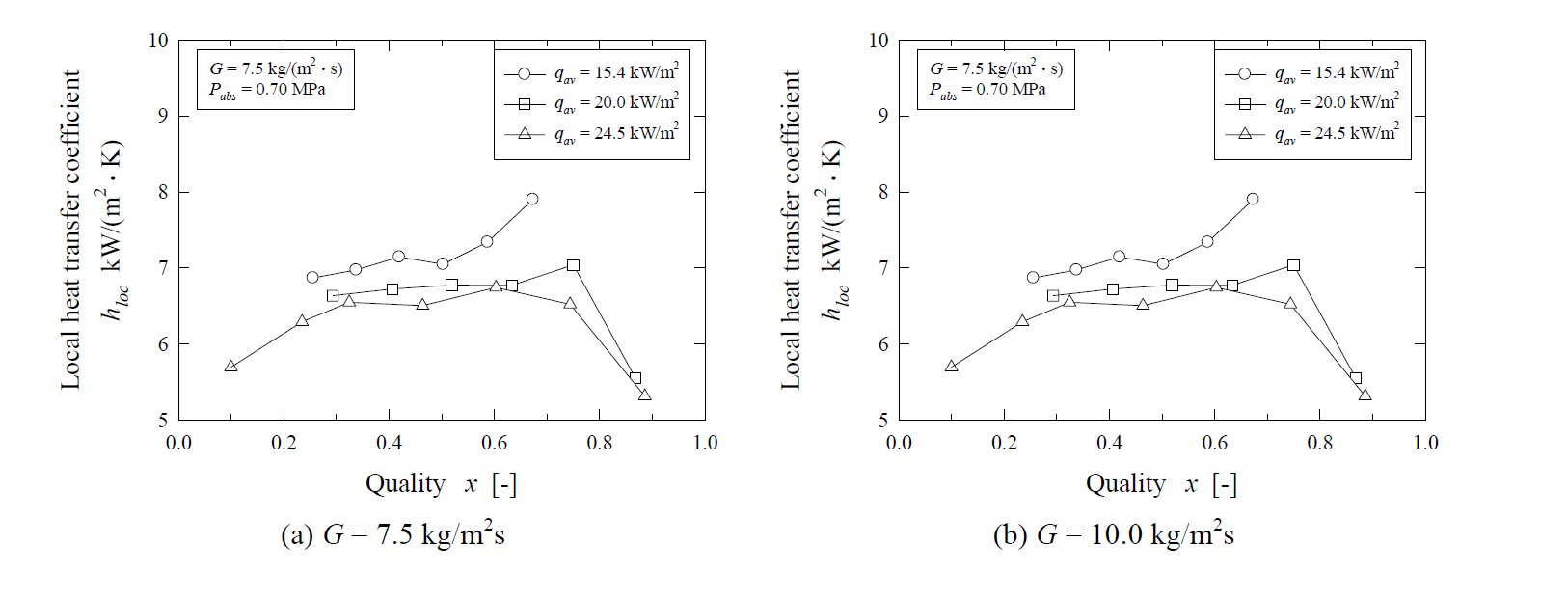 |
| An example of the ammonia local heat transfer coefficient |
Visualization of Boiling Flow Regime of Ammonia and Ammonia/Water Binary Mixture
Visualization of the boiling flow pattern of ammonia and ammonia/water binary mixture as a working fluid inside plate evaporator using basic experimental apparatus for plate evaporator were performed.
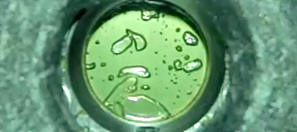 |
| An example of the ammonia boiling flow regime |
Heat Transfer Enhancement of Ammonia and Ammonia/ Water Mixture Using Micro Grooves Surface
Using basic experimental apparatus for small plate evaporator, study of the heat transfer enhancement of the ammonia and ammonia /water under the micro grooved heat transfer surface were performed.
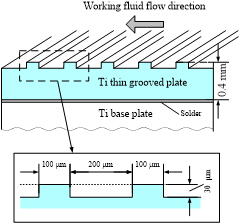 |
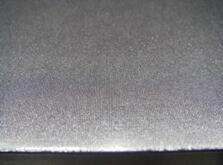 |
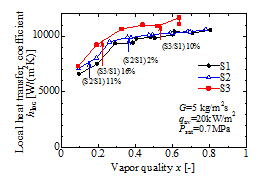 |
| Shape of the micro grooves surface | The micro grooves surface | The example of the heat transfer enhancement |
Study of Availability of Aluminum Alloys as a Material for Plate Heat Exchanger
(1) Tolerance examination by the ammonia immersion of the PEEK resign coating aluminum plate
Aluminum is easy to corrode with ammonia.
Therefore, the aluminum plate for heat exchanger is coated by PEEK resin.
In order to confirm the tolerance by ammonia, the immerse test of the aluminum plate in ammonia were performed during 1 month.
The thickness of PEEK resin coating is 20, 300μm.
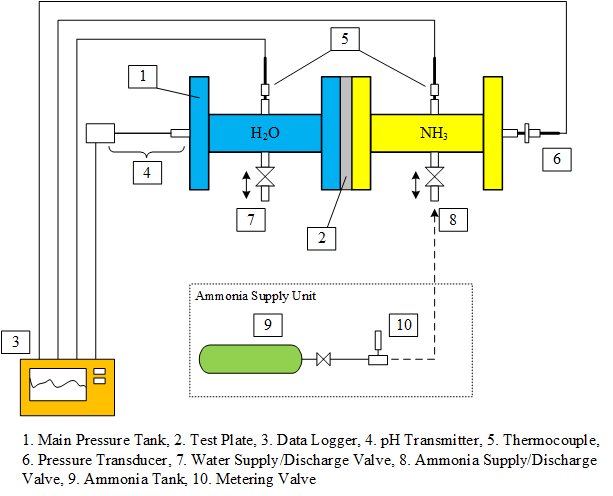 |
|
| Schematic diagram of the experimental apparatus | |
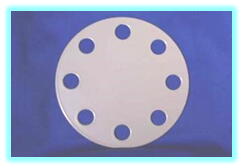 |
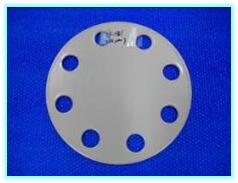 |
| PEEK coating aluminum plate (Before immersion) | PEEK coating aluminum plate (After immersion) |
(2) Tolerance examination by the ammonia forced convection of the PEEK resign coating aluminum plate
The corrode test of the aluminum plate which is (1) in ammonia boiling forced convection were performed.
The thickness of PEEK resin coating is 20μm.
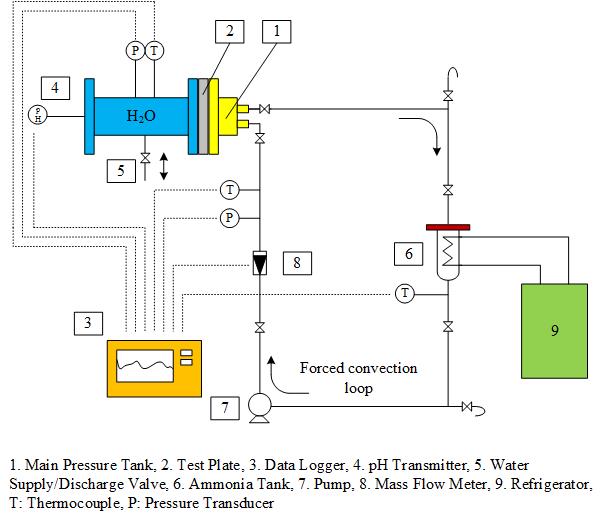 |
|
| Schematic diagram of the experimental apparatus for ammonia forced convection | |
 |
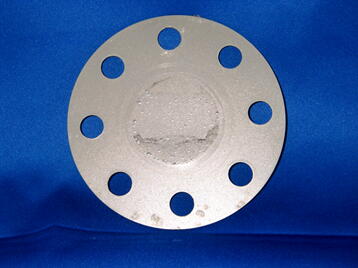 |
| PEEK coating aluminum plate (Before testing) | PEEK coating aluminum plate (After testing) |
(3) Tolerance examination and measurement of heat transfer coefficient on the ammonia pool boiling of the PEEK resign and WIN KOTE coating
Aluminum is easy to corrode with ammonia.
Therefore, the aluminum plate for heat exchanger is coated by PEEK resin and WIN KOTE.
In order to confirm the tolerance and measure heat transfer performance by ammonia, the immerse test of the aluminum block under pool boiling in ammonia were performed during 2 month.
The thickness of PEEK resin and WIN KOTE coating is 20 and 5μm, respectively.
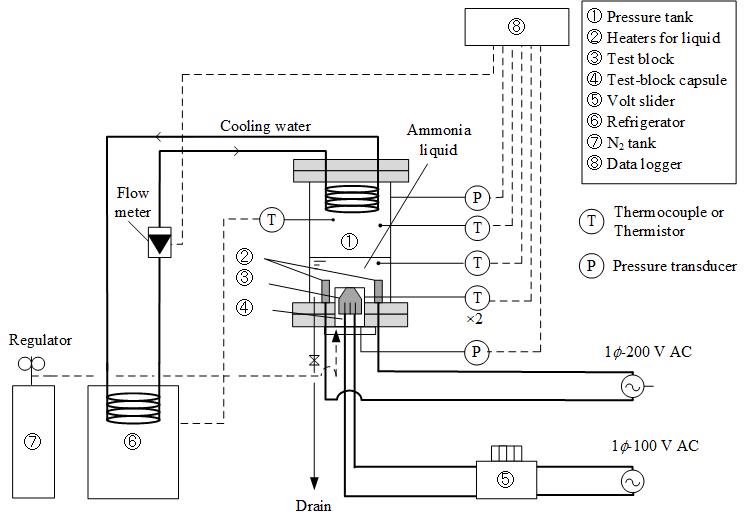 |
|
| Schematic diagram of the experimental apparatus for ammonia pool boiling | |
 |
 |
| PEEK coated heat transfer surface (Before/ After testing) |
WIN KOTE coated heat transfer surface (Before/ After testing) |
(4) Tolerance examination and measurement of heat transfer coefficient on the ammonia forced convective boiling of the PEEK resign and WIN KOTE coating aluminum plate
Aluminum is easy to corrode with ammonia. Therefore, the aluminum plate for heat exchanger is coated by PEEK resin and WIN KOTE.
In this study, the corrosive condition and heat transfer performance test for ammonia using test aluminum alloy plate for plate heat exchanger which is coated by PEEK and WIN KOTE were performed.
The change of corrosive and overall heat transfer during 3 months under ammonia boiling forced convection and ammonia and hot water circulation inside plate heat exchanger were confirmed.
The thickness of PEEK resin coating is 25 and 100μm, respectively. In addition, the thickness of WIN KOTE coating is 5μm.
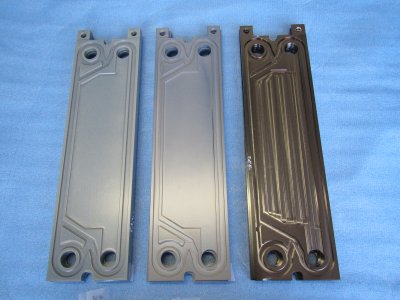 |
||
| 100μm PEEK | 25μm PEEK | WIN KOTE |
| Coated aluminum alloy test plates | ||
 |
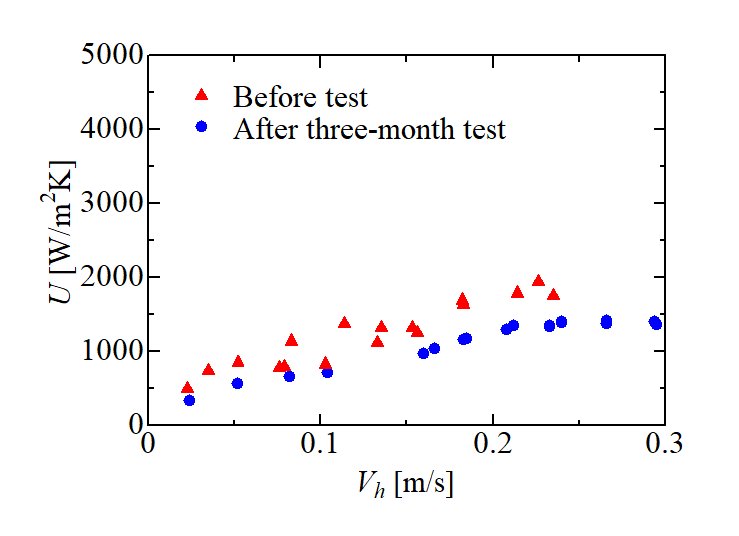 |
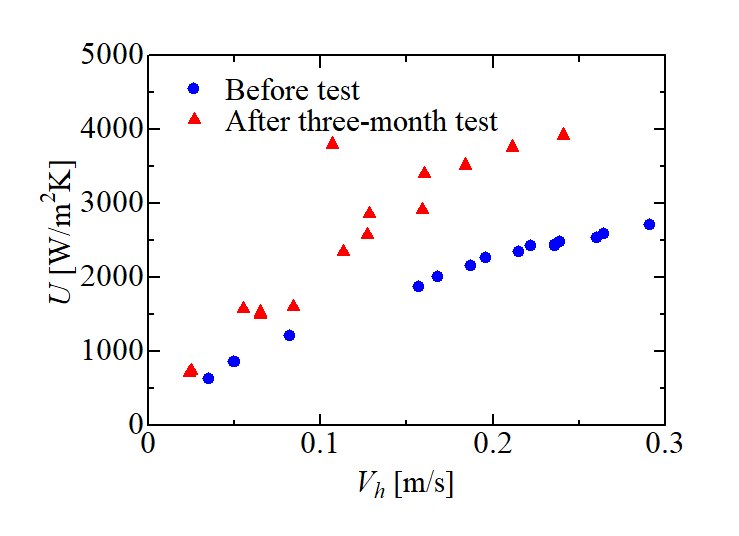 |
| 25μm PEEK | 100μm PEEK | WIN KOTE |
| Compared boiling heat transfer coefficient between before and after test | ||
 |
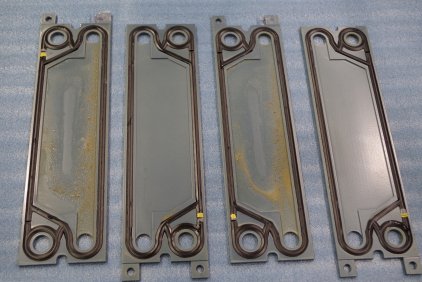 |
 |
| 25μm PEEK | 100μm PEEK | WIN KOTE |
| Compared of heat transfer coefficient between before and after test | ||
(5) Tolerance examination and measurement of overall heat transfer coefficient on the seawater forced convection of the PEEK resign and WIN KOTE coating aluminum plate
Aluminum is easy to corrode with seawater. Therefore, the aluminum plate for heat exchanger is coated by PEEK resin and WIN KOTE.
In this study, the corrosive condition and heat transfer performance test for seawater using test aluminum alloy plate (as same as (4)'s study) for plate heat exchanger which is coated by PEEK and WIN KOTE were performed.
The change of corrosive and overall heat transfer during 5 months under surface and deep seawater circulation and forced convection inside plate heat exchanger were confirmed.
This investigation were performed in Kumejima satellite of Okinawa pref. where is able to provide surface and deep seawater.
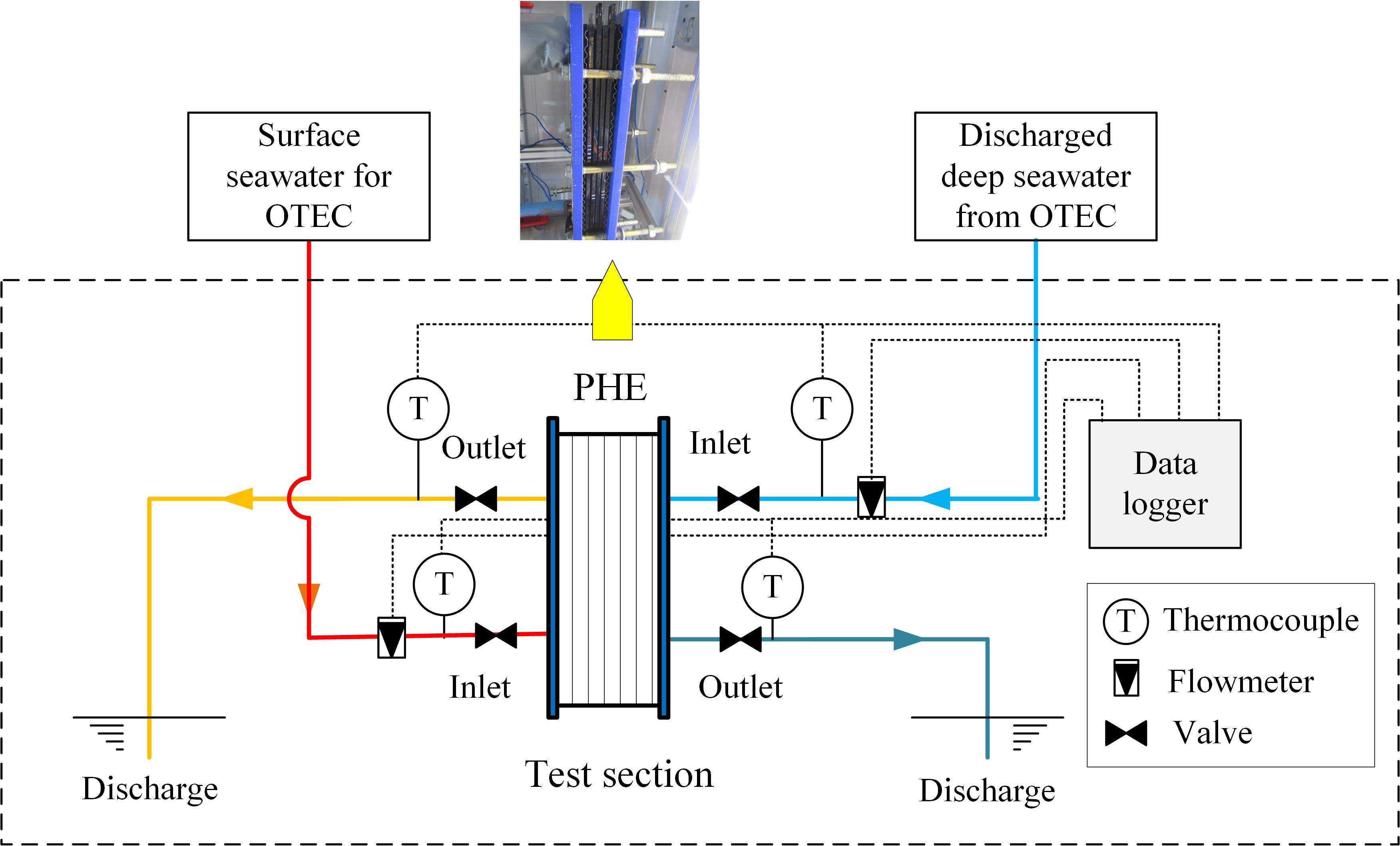 |
| Schematic diagram of surface and deep seawater circulation system (Imari satellite) |
 |
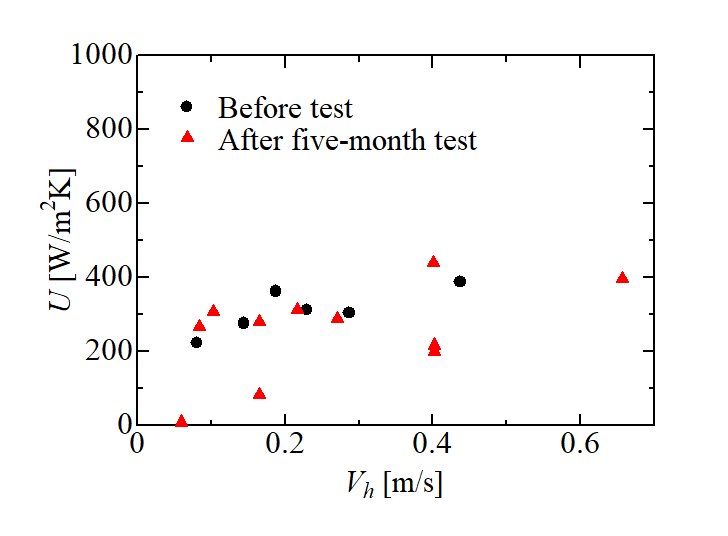 |
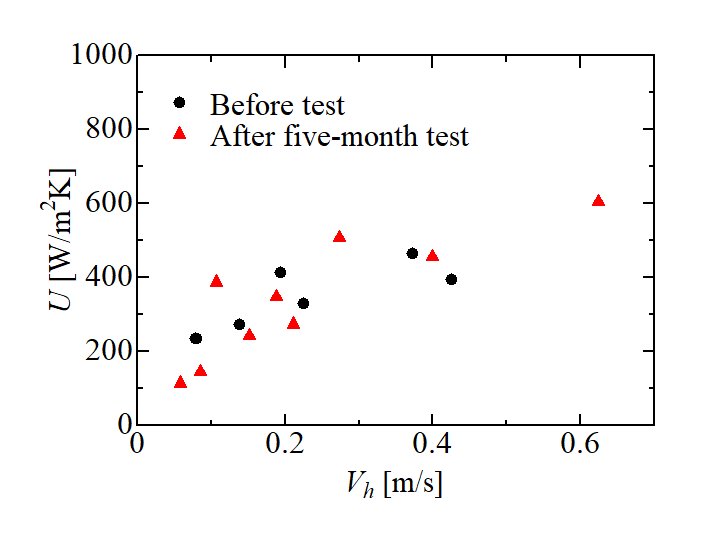 |
| 25μm PEEK | 100μm PEEK | WIN KOTE |
| Compared heat transfer coefficient between before and after test | ||
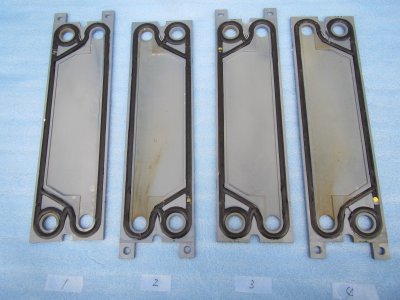 |
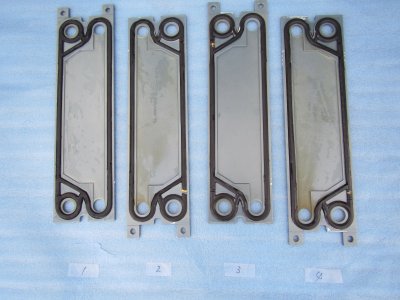 |
 |
| 25μm PEEK | 100μm PEEK | WIN KOTE |
| Compared of heat transfer coefficient between before and after test | ||
(6) Heat transfer performance evaluation using the PEEK resign and WIN KOTE coating aluminum plate using as a condenser plate for spray flash seawater desalination system
The measurement of condensing heat transfer of plate condenser which installed aluminum alloy plate, into the spray flash seawater desalination system was performed into Imari and Kumejima satellite.
The adopted plates for these experiments were as same as that of the (4)’s and was also ready-made titanium plates. We measured the allover heat transfer coefficients of the condenser and production water under the several temperature and flow rate of source (sea)water and flow rate of the cold water conditions.We used the surface and deep seawaters as a source and cooling water in Kumejima satellite.
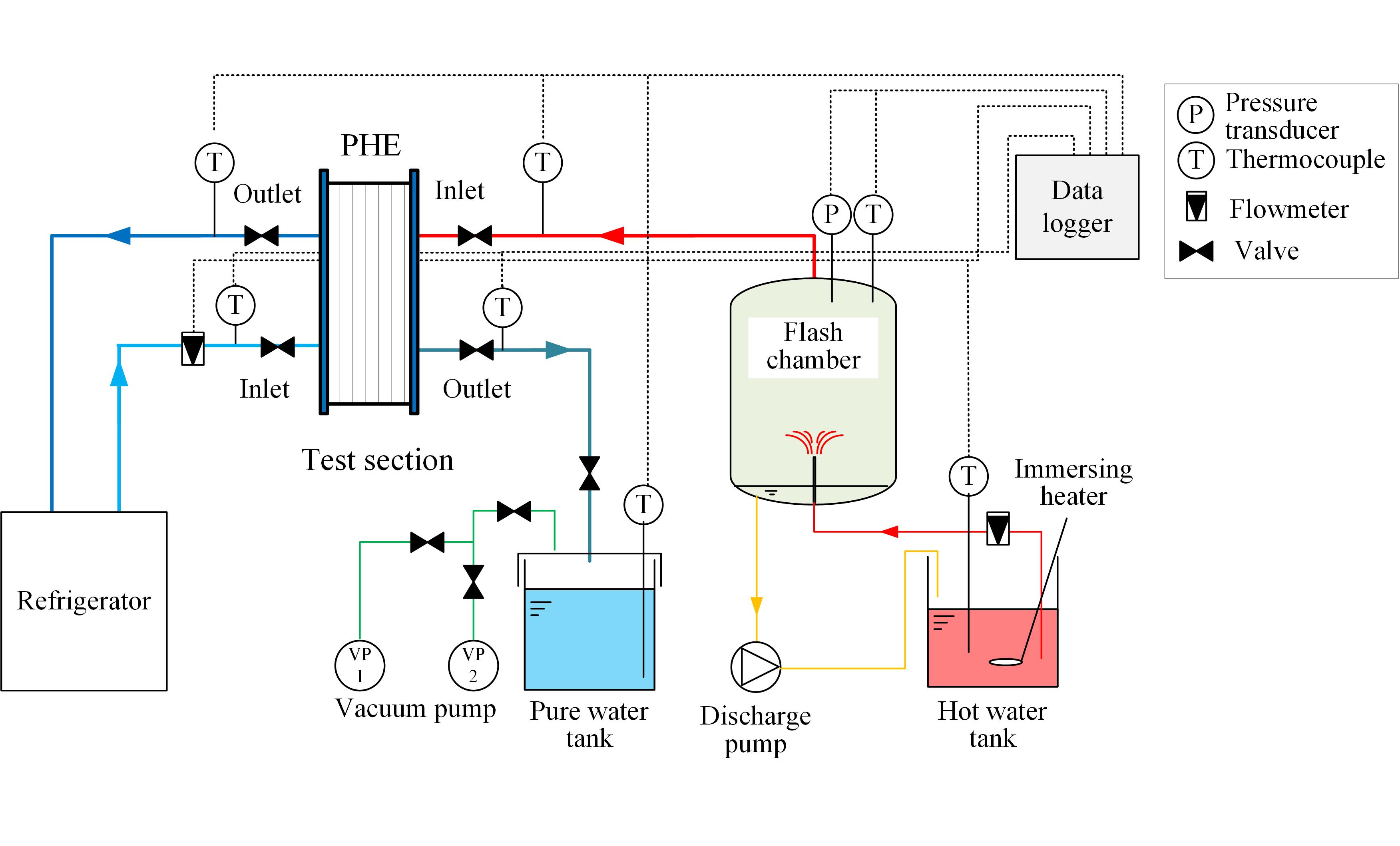 |
| Schematic diagram of spray flash seawater desalination system for experiment of plate condenser using aluminum alloy plate (Imari satellite) |
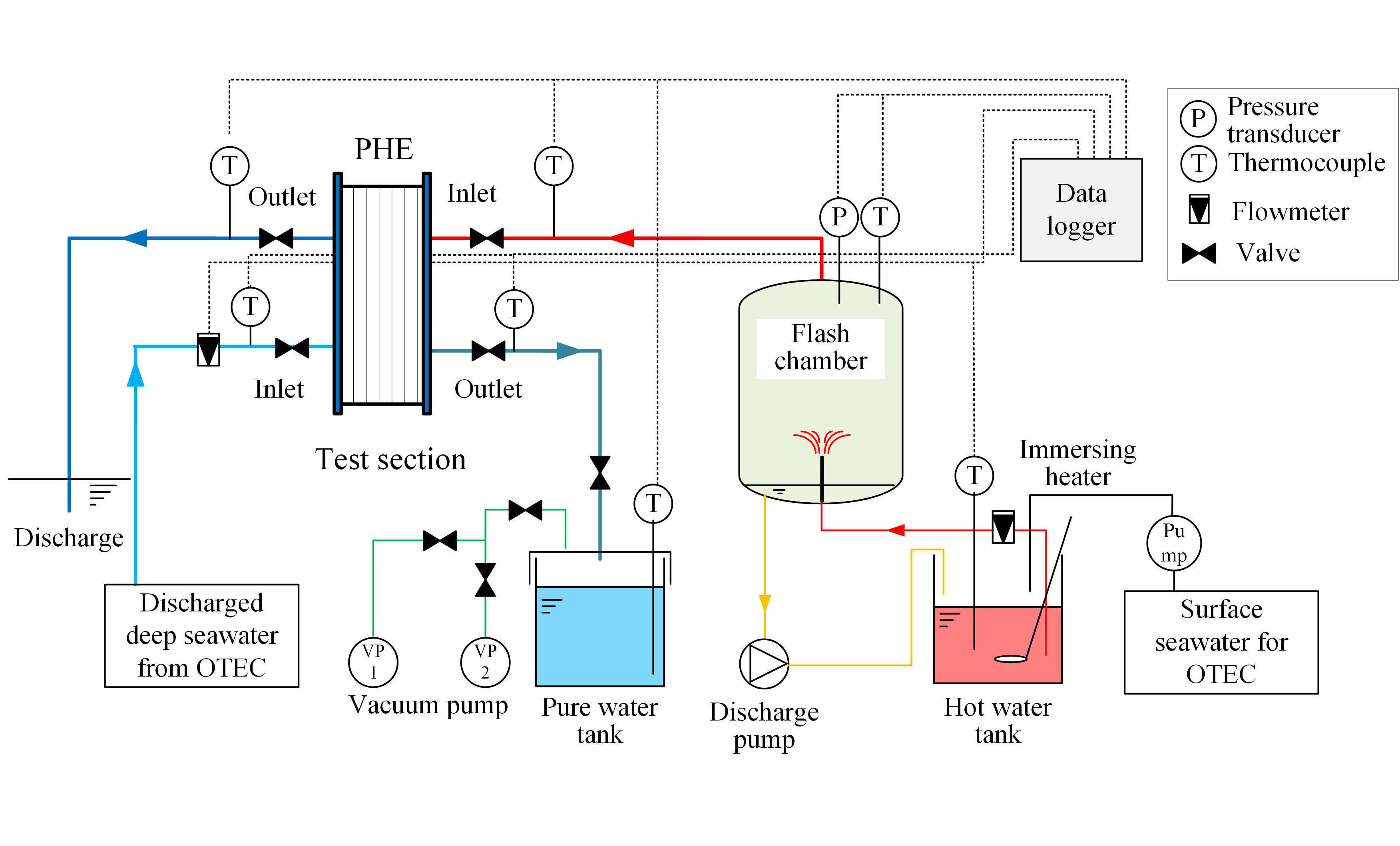 |
| Schematic diagram of spray flash seawater desalination system for experiment of plate condenser using aluminum alloy plate (Kumejima satellite) |
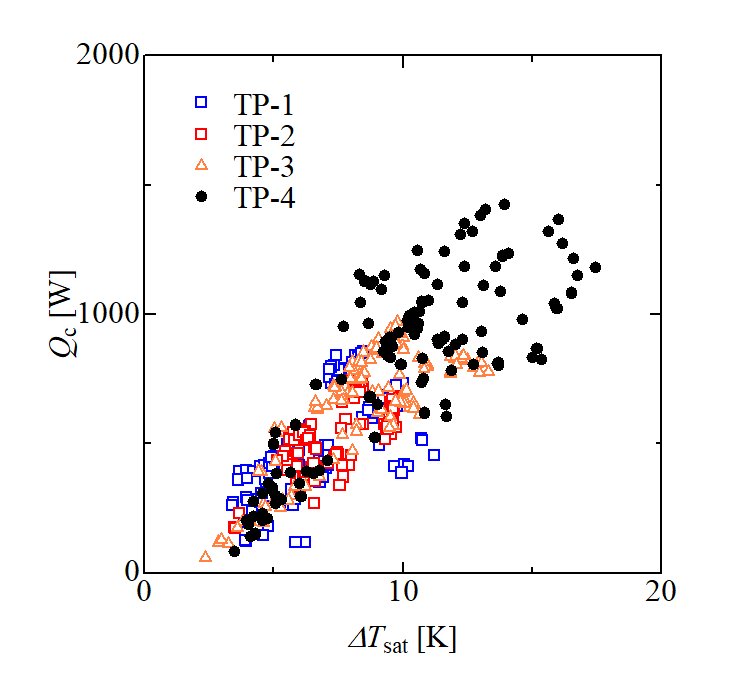 |
||
| Heat transfer rate of condenser against surface superheat degree (TP-1: 25μm-PEEK, TP-2: 100μm-PEEK, TP-3: WIN KOTE, TP-4: Ti) |
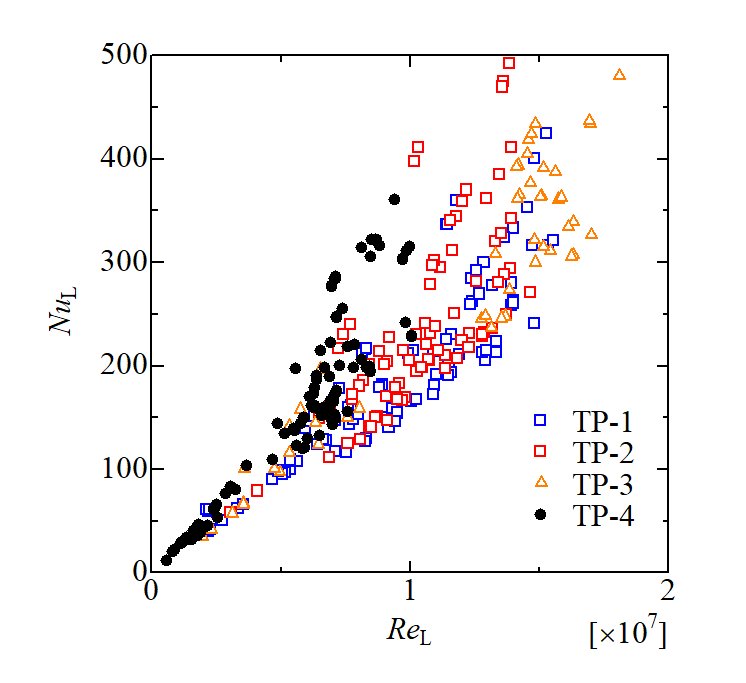 |
||
| Condensing heat transfer coefficient against vapor mass flow rate (ReL vs. NuL) (TP-1: 25μm-PEEK, TP-2: 100μm-PEEK, TP-3: WIN KOTE, TP-4: Ti) |
Development of the Numerical Simulation Code for Designing of Plate Heat Exchanger
The analysis of boiling heat transfer phenomenon inside plate heat exchanger were performed by numerical simulation. The CLSVOF method was adopted as method of this two phase flow simulation.
| Single bubble / Intermittency bubble |
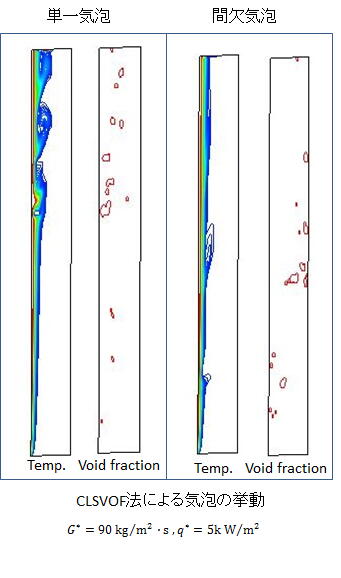 |
| Calculation result of the bubbles behavior by the CLSVOF method |
Visualization of FC-72 Boiling Flow Regime inside Plate Heat Exchanger
In order to promote the construction of ocean thermal energy conversion, it is important to reduce the all cost of OTEC, downsize and promote efficiency of the heat exchanger.
In order to develop the high efficiency heat exchanger, it is necessary to understand the flow boiling pattern inside plate heat exchanger. Therefore, we investigated the visualization of flow boiling pattern using the transparently plate heat exchanger.
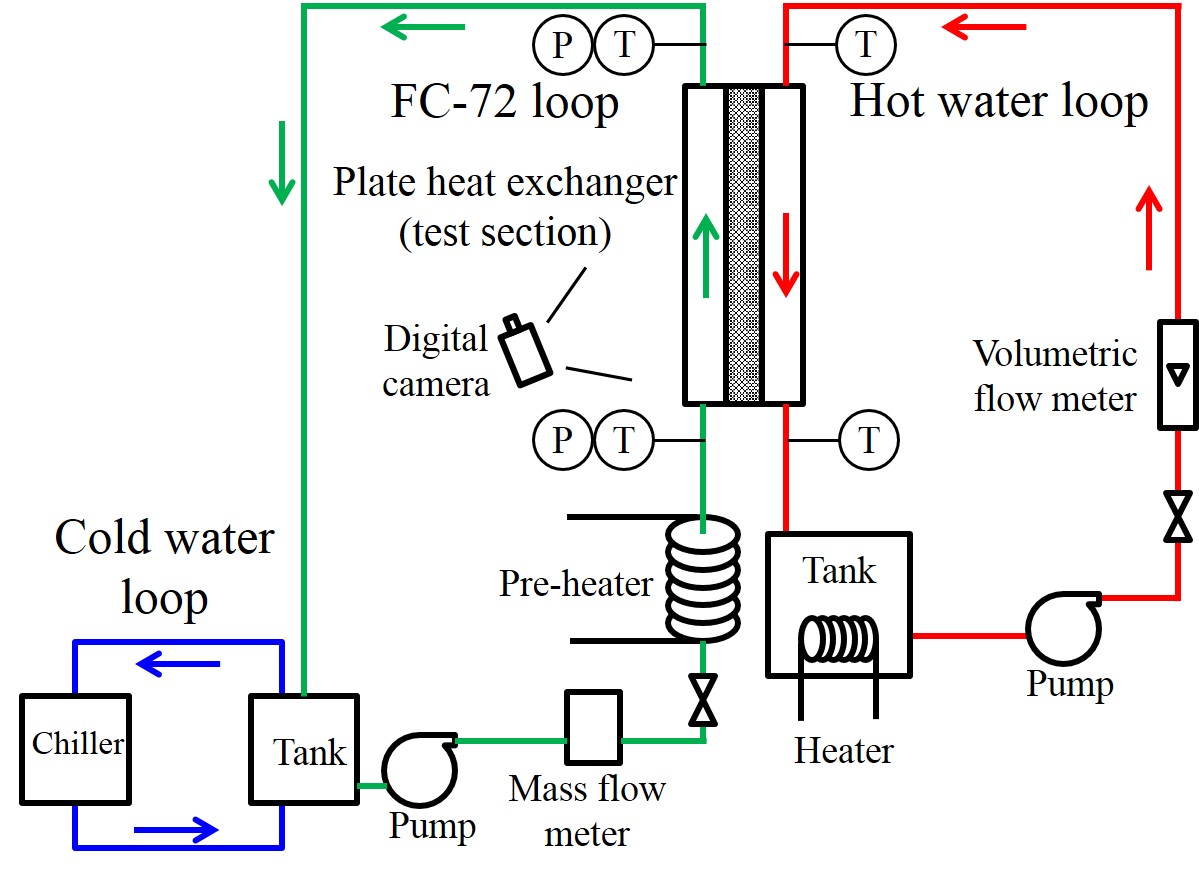 |
| Schematic diagram of the experimental apparatus |
In this study, the plate heat exchanger under a counterflow and parallel flow was operated and the performance of thermal hydraulics between two flow direction were compared.
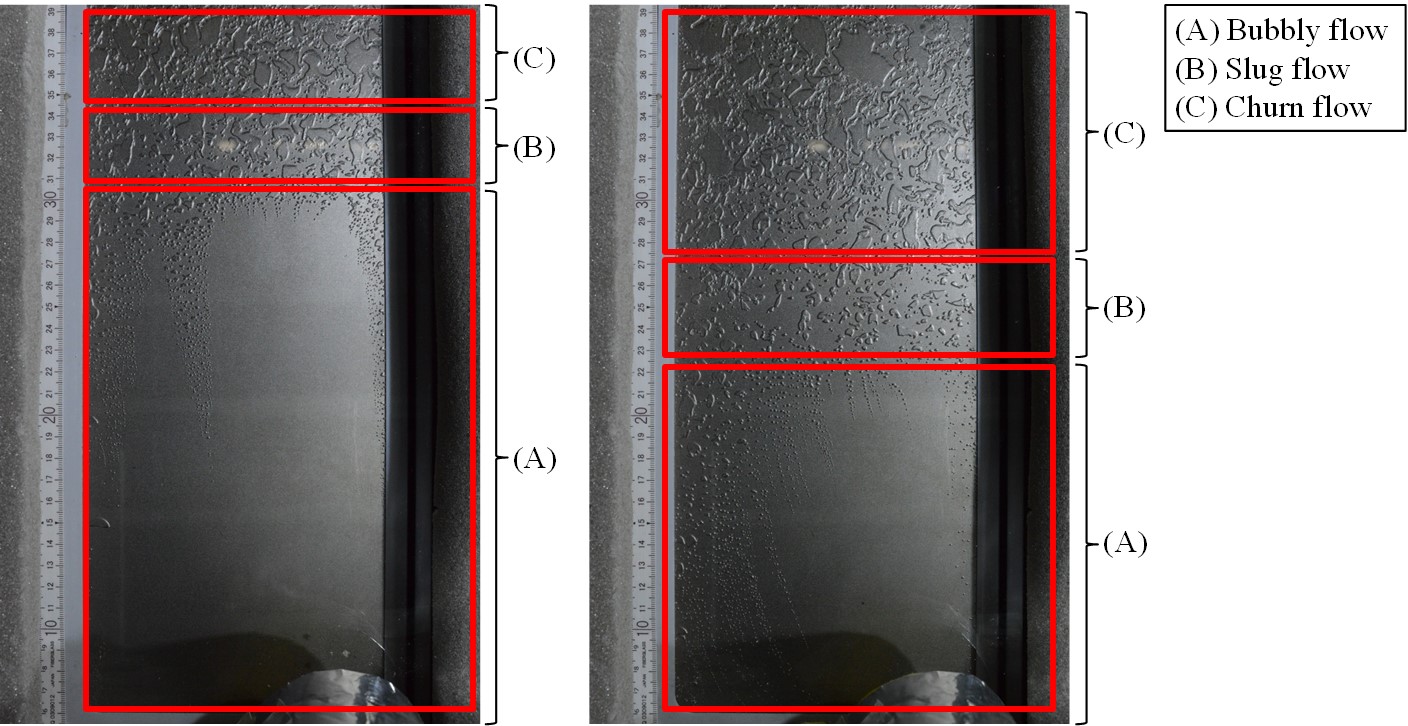 |
| Flow pattern (Left: counter-flow, Right: parallel-flow) |
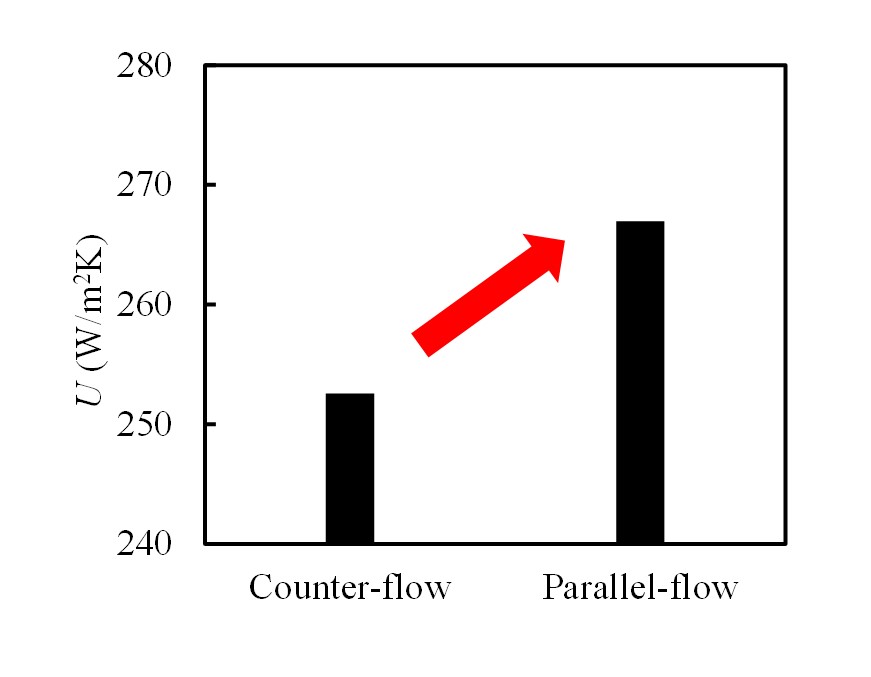 |
| Compared of heat transfer coefficient between counter and parallel flow |
Development of the 3D Numerical Simulation Code for Plate Heat Exchanger
In order to develop the numerical simulation code for boiling of working fluid inside plate heat exchanger of OTEC as a final purpose, developing the 3D numerical simulation code for single phase flow inside plate heat exchanger as a first step. We are developing the numerical simulation code including the heat conduction inside the partition in particular.
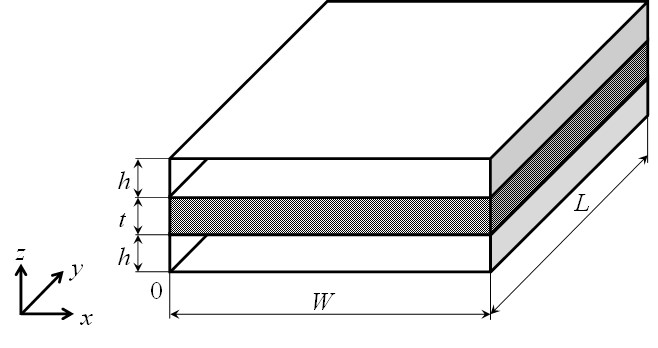 |
| Analysis model |
 |
| Example of numerical analysis results |
